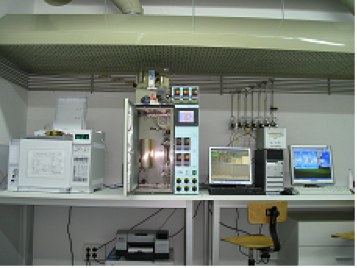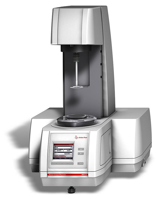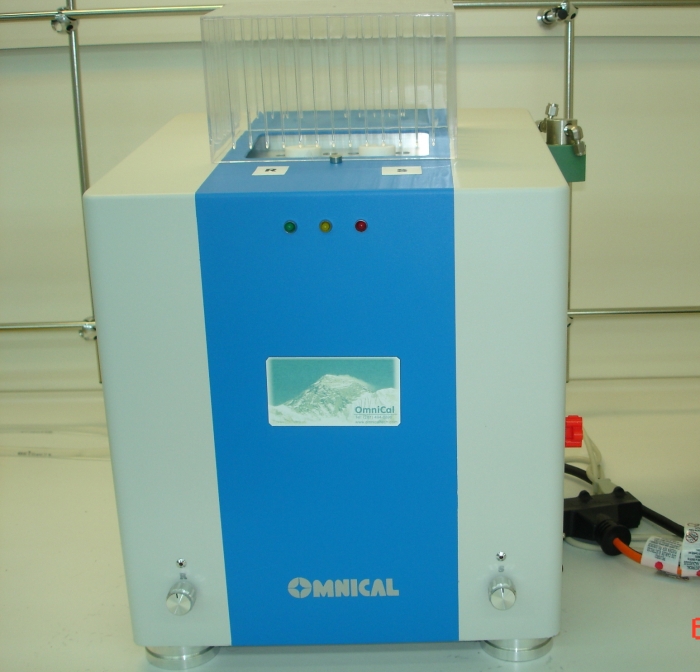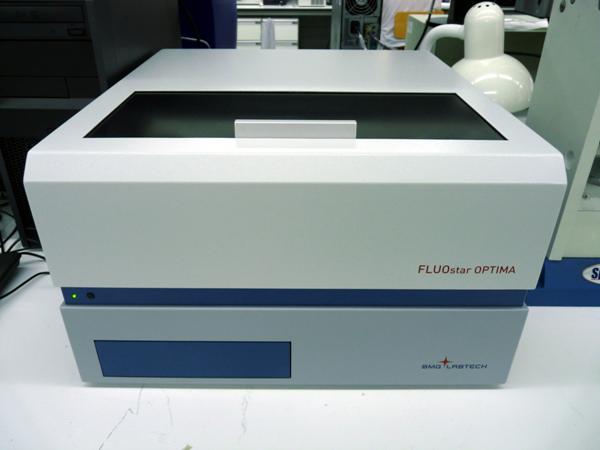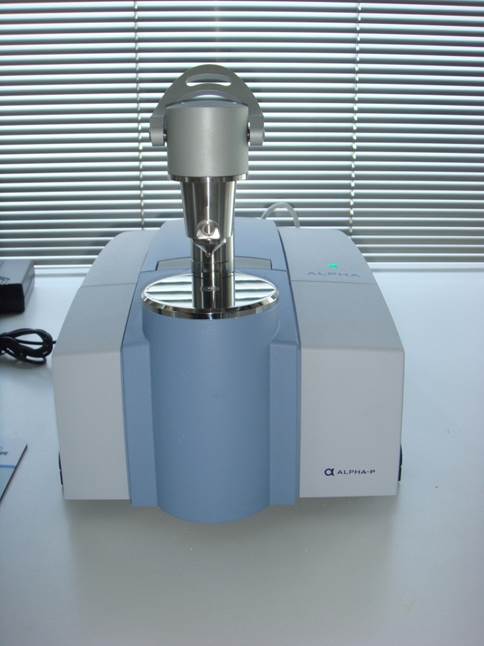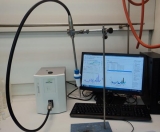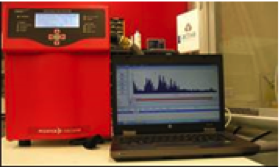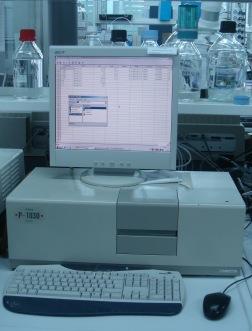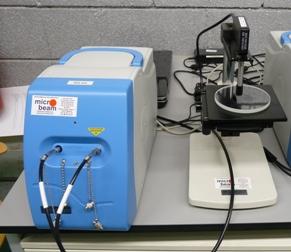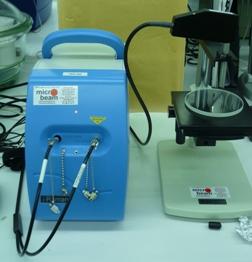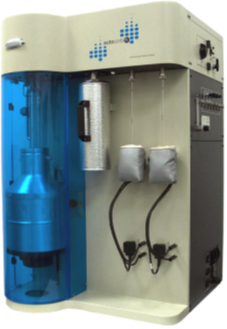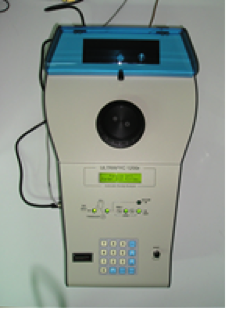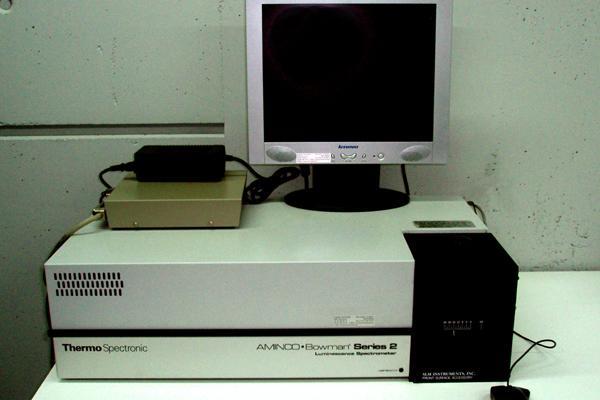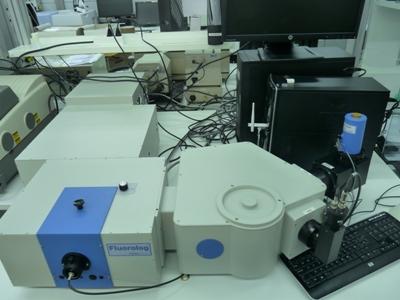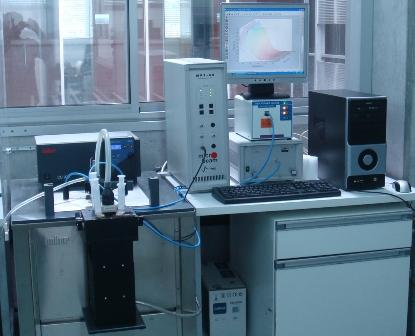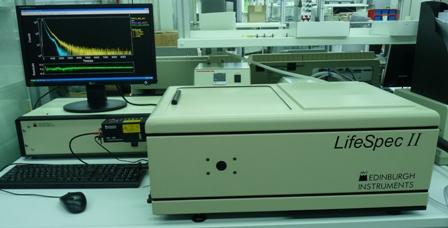Spectroscopy and characterization of materials
GINYS-ICIQ-005
The Materials Spectroscopy and Characterization Unit provides scientific support to the institute's research groups in spectroscopic techniques (UV-Vis, FTIR, FT-Raman, circular dichroism and fluorescence spectra as well as polarimetric measurements) and methods related to the testing and characterization of solid materials. (textural properties, paramagnetism, surface chemistry, DLS, pycnometry, viscosity, in-line analysis of gases), in terms of their structure and chemical reactivity. Among other devices, the unit has a stopped flow system to measure fast reaction rates in the range of milliseconds at different temperatures (-90 to +100 ºC).
In addition, the Unit trains users in order to achieve optimal use of the instruments.
Services
Spectroscopy
UV-Vis-NIR
Absorbance of solids, liquids and films – NIR for highly concentrated samples –
Stopped-Flow
Light emission
Fluorescence – Phosphorescence – Lifetime measurements – Luminescence –
Fluorescence microwell plate reader
Infrared
ATR – Transmission – In situ monitoring
RAMAN
Organic and inorganic compounds, drugs, carbon materials, polymers – Lasers
available: 532, 785 & 1064 nm
Circular dichroism & Polarimetry
Chiral molecules, proteins, nucleic acids and metal-protein interactions
Materials Characterization
Volumetric physisorption
Textural properties of solid materials
Surface chemistry
Chemisorption (volumetric and pulse),TPD, TPR, TPO
Dynamic light scattering (DLS)
Particle size – Surface charge. Suspensions or solutions.
Pycnometry
Density of solids
Rheometry – Viscosimetry
Dense liquid studies – Material behavior under applied forces – Viscosity
measurements
Electron Paramagnetic Resonance (EPR)
Transition metals – Free radicals – Organic complexes – Reaction intermediates
– In situ irradiation
Equipment
- FLUOstar Omega fluorescent microprocessor plate reader. System consisting of a xenon lamp, wheels with 8 excitation and 8 emission filters, temperature control from + 5ºC to 45ºC ambient, a reagent injector and a PMT detector. The instrument allows to measure the intensity of the fluorescence and the absorbance in UV / Vis in microplates of until 1536 wells. Wavelength range for fluorescence: 240-740 nm. Wavelength range for absorbance: 220-850 nm.
- UV-Vis-NIR Lambda 1050 Spectrophotometer by Perkin Elmer. This high-performance instrument has dual-beam optics, dual monochromator and three-detector system (PMT, InGaAs and PbS) covering the range of 175 to 3300 nm.
- Shimadzu UV-Vis III dual-beam UV-Vis III spectrophotometer model UV-1800. Spectral range from 190 to 1100 nm, fixed slit from 1 nm.
- UV-Vis II spectrophotometer UV-Vis Agilent Technologies dual-beam model Cary 60 UV-Vis. Spectral range from 190 to 1100 nm, fixed gap of 1.5 nm and immunity to room light.
- Shimadzu UV-Vis I dual-beam UV-Vis I spectrophotometer model UV-2401PC with Peltier thermostat sample holder (7-60 ºC). Optical range from 190 to 1100 nm, variable slit.
- Time-related unique photon count spectrometer (TCSPC). Edinburgh Instruments LifeSpec II. It is a compact, high-performance computer-controlled spectrometer for rapid measurement of fluorescence life based on the time-correlated single photon counting technique. The LifeSpec II has two detectors, a standard PMT in the UV-vis range and another refrigerated PMT nitrogen with spectral response in the vis-NIR region from 300 to 1700 nm.
- Stop flow – Bio-Logic SFM300 fast mixing stop flow module, with three independently controlled syringes, which allow single or double mixing, different mixing ratios and submillisecond mixing times. The system is completed with a Huber CC3-905 VPCw cryostat (-90 ºC to +100 ºC) and a fast UV-Vis Diode Array TIDAS spectrophotometer capable of recording a spectrum in 0.8 ms.
- Aminco-Bowman Series 2 luminescence spectrofluorimeter. System consisting of a continuous and a pulsed xenon lamp, four temperature-controlled cuvette holders (20-60ºC) and a solid sample holder. Wavelength range: 250-850 nm.
- Spectrofluorimeter II Horiba Jobin Yvon. System consisting of a 450W continuous xenon lamp, double monochromator for excitation, a solid sample holder, detection in right or front angle mode and absorbance measurements. The instrument allows fluorescence measurements in the wavelength range of UV / Vis and NIR from 250 to 1600 nm.
- BWTEK 785 nm i-Raman portable Raman spectrometer. This instrument has a 785 nm excitation laser and a fiber optic probe with a TE Cooled Linear Array detector. The resolution is 3 cm -1 and the spectral range is from 75 to 3200 cm -1.
- BWTEK 532 nm i-Raman portable Raman spectrometer. This instrument has a 532 nm excitation laser and a fiber optic probe with a TE Cooled Linear Array detector. The resolution is 3 cm -1 and the spectral range is from 75 to 4000 cm -1.
- Jasco polarimeter model P-1030 with symmetrical angular oscillation for the sodium line and photomultiplier tube detector. Angular range: ± 90º, speed better than 6º s-1.
- Thermo Scientific FTIR I Nicolet is50 spectrometer, with DLaTGS and MCT detectors, and FTRaman module with Raman mapping capability and well plate detection. The instrument also includes an integrated ATR module with diamond crystal that allows samples to be measured in the far infrared (up to 150 cm -1) and middle infrared (4000-400 cm -1) regions. Spectral range in the main sample compartment: 4000–400 cm -1.
- FTIR II Bruker Alpha model spectrometer with an ATR accessory. Spectral range from 4000 to 400 cm-1.
- FTIR III React IR 15 spectrometer by Mettler Toledo. The instrument allows the monitoring of the reaction in situ in the middle infrared. Spectral range: 3000 to 650 cm-1.
- Agilent Technologies ’Cary 630 FTIR IV spectrometer was equipped with a DLaTGs detector (4 cm-1 resolution) and a unique bounce diamond ATR accessory (spectral range 650-4000 cm-1). There is also a DialPath accessory for measuring liquid samples in transmission mode with a selectable travel length of 30, 50 and 100 μm.
- Super CRC 20-250-2.4 Microcalorimeter from Omnical Technologies to track heat flow in chemical reactions. Temperature range from -100C to + 200C, sensitivity of 1 microwatt.
- Gas adsorption analyzer Quantachrome Autosorb iQ Porous structure of solids by gas physisorption (BET area and pore volume, pore size distribution) usually by nitrogen. Surface characterization by chemisorption.
- Thermo Scientific ™ TPDRO 1100 Chemical characterization of solids by gas flow temperature ramp experiments (TPD, TPR, TPO) and pulse chemisorption. Active sites: type, reactivity and quantity. Affinity for representative probe molecules (usually NH 3 and CO 2).
- Pfeiffer Omnistar Mass Spectrometer Online Gas Analysis. Up to 100 AMU. Analysis of gas currents and atmospheres. Support for other devices (TPDRO 1100, researcher configurations).
- Quantachrome micro Ultrapyc 1200e It allows to measure the real or skeletal density of solids (without considering the volume occupied by the pores) by displacement of gases, normally helium. Accuracy increases with the amount of sample (ideally 0.5-2 cm 3).
- ZEN3600 NanoZS Malvern Light Dispersion Analyzer (DLS) for nanoparticles and suspended macromolecules. Hydrodynamic diameter for DLS (0.6 to 6000 nm). Zeta potential of particles between 5 and 10000 nm for DLS. Molecular weight (1 to 20000 kDa) per SLS. Effect of pH or additives on zeta potential and particle size using a titration accessory.
- Anton Paar MCR302 Rheometer Determines the absolute viscosity and flow behavior under different conditions of speed or shear stress and temperature.
- Brookfield DV-II + pro viscometer at given shear speeds.
- Microactivity reference (PID Eng & Tech) Computerized and computer controlled laboratory reactor for catalytic testing. Up to 1000 ºC and 100 bar. Flow with up to five gases and one vapor. Programmable to work 24 hours a day. Exhaust gases analyzed by GC (optionally by MS).
- Bruker EMX X-band micro EPR with an X-band bridge of 9.1 – 9.9 GHz. It allows to acquire spectra so much of samples of solution as of powder to study metallic complexes or organic radicals in environingingmental conditions (298 K) or low temperature like 4 K (He) or 77 K (N2), in perpendicular or parallel mode . In addition, paramagnetic compounds can be generated in situ by UV-Vis irradiation (Hg lamp 200 – 2000 nm) or external devices (LED).
Staff
Mariona Urtasun | murtasun@iciq.es
| 977 920 200 (ext. 352)
Dr. Georgiana Stoica | gstoica@iciq.es
| 977 920 200 (ext. 352)

